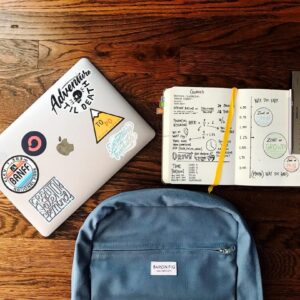Testing Accommodations for Students With Neurodivergence
Standardized testing has been a controversial topic for the longest time. While many parents approve it as a method of tracking their child’s academic progress, many argue that standardized testing is not an accurate measure of a child’s progress, since it only measures how good they are at taking tests. In fact, one of the main issues with standardized testing is that it doesn’t accommodate students with neurodiversity, such as learning disabilities, who struggle with taking exams.
These types of students encounter several issues related to their disabilities while they are answering tests, which is why they cannot give their all or complete the exam as easily as others would. Being a student with neurodiversity does not mean that they are any less smart compared to their peers. Rather, their struggles with their attention span, reading comprehension, and other key skills prevent them from showing their full potential while learning and taking exams.
If you have a child with neurodiversity, or if you are one of these students yourself, then don’t worry! We’re here to help you out. In this article, we’re going to be covering the challenges students with neurodiversity face while learning, along with the standardized testing accommodations they need to overcome them.
Alternate Test-Taking Environments
There are instances wherein the issue does not lie with the students themselves, but the environment in which they are taking the exam. As students with neurodiversity continue to go to school, certain factors may cause a shift in their attitude towards their learning environment. There are several possibilities behind the change in your child’s attitude and learning habits, such as feeling that their curriculum is too difficult for them or not challenging enough.
Regardless of the reason behind it, it all boils down to one main problem: if the student doesn't feel comfortable in their environment, the chances of them being able to take the exam at their best will be lower.
Karren Jensen, a former CEO at NeuroCapability, says “You can’t just demand more from the brain without also creating the ‘right’ environment for it to perform at its best.” For students with learning disabilities, testing should be done in an environment that the student feels comfortable in.
Students with neurodiversity will often have certain conditions wherein they feel the most motivated and focused. It varies with every child, but some accommodations for students with learning disabilities include:
- Letting them choose where to sit
- Giving them a private room while taking the exam
- Clearing the room from any form of distraction
- Giving them their preferred special conditions (lighting, temperature, sounds, etc.)
Alternative Ways to Take the Test
Standardized exams are typically composed of the same questions and evaluated similarly each time the students take them. They often come in the same format, which many students with neurodiversity have a hard time comprehending. If this is the case, they won’t really be able to take the exam properly unless it’s presented in a way they understand. If possible, ask their school for alternative ways for them to take the exam. Explain the situation calmly and let the staff know of your child’s struggles.
You may ask the school if your child can take the exam verbally, online, handwritten, or in other ways that they find comfortable. Some children struggle with cognitive or motor abilities that hinder their learning experience, so these special education and standardized test alternatives exist to ensure that they will still be getting the quality learning experience they deserve despite their disabilities.
Ask for Additional Time
To make sure that your child is being treated fairly and given the considerations they need during exams, you need to collaborate with the school frequently. Like their environment, the time frame set for standardized tests could be another factor that hinders your child from performing well. Standardized testing accommodations should include considerations for time as well.
It's best if you work closely with the school in creating an Individualized Education Program (IEP), which grants students with neurodiversity special conditions to aid them in their learning. Once again, explain the situation calmly to the school personnel and begin forming a plan that works for both parties. These special time accommodations could include permission to take breaks while taking the exam or extending the time limit, among many other options.
Implement Adaptive Technology
Throughout the years, technology has gone through countless advancements and improvements to become as inclusive as possible for all users. As mentioned before, many students are faced with reading comprehension issues, motor issues, cognitive issues, and more when taking exams. To make things easier for them, these students often turn to their preferred devices, digital services, or applications. The scope of technology that caters to neurodiversity is broad, but here are a few examples:
- Headphones
- Talk-to-text technology/screen readers
- Recording devices
- Phonetic dictionaries
Take Advantage of Support Groups
Many students with neurodiversity undergo feelings of isolation or loneliness because of their disabilities. Although it does not make them any less worthy of praise or love, your child would feel much better had someone who could relate to them. Support groups are a solid option for both students with neurodiversity and their parents. It offers a safe and encouraging environment wherein people who come from a similar background can share their experiences, tips, and companionship.
Support and companionship are vital, especially during the time leading up to your child’s standardized exams. If you are interested in tutoring for standardized testing, here are a few options to consider:
- Student Disability Resource Center
- Campus Support Groups
- Support Groups on Social Media
- Online tutoring
Study, Study, Study!
Although some schools are willing to make accommodations for students with learning disabilities, it’s best to help your child prepare for their exams ahead of time so that they are fully equipped and ready for whatever comes next. If you are a student with neurodiversity, try to study the material as soon as you have it. Don’t just memorize; make sure to familiarize yourself with the concepts as well.
If reading material is too long, you can try to scan through or create an outline for you to study properly. You can also record yourself reading the study material out loud if you have trouble picking up information visually. You can color-code your notes, make flash cards, and find videos on the topic online instead of reading it.
Basically, just figure out what works best for you! It’s a tough road to take, but with enough support and motivation, nothing is impossible.




